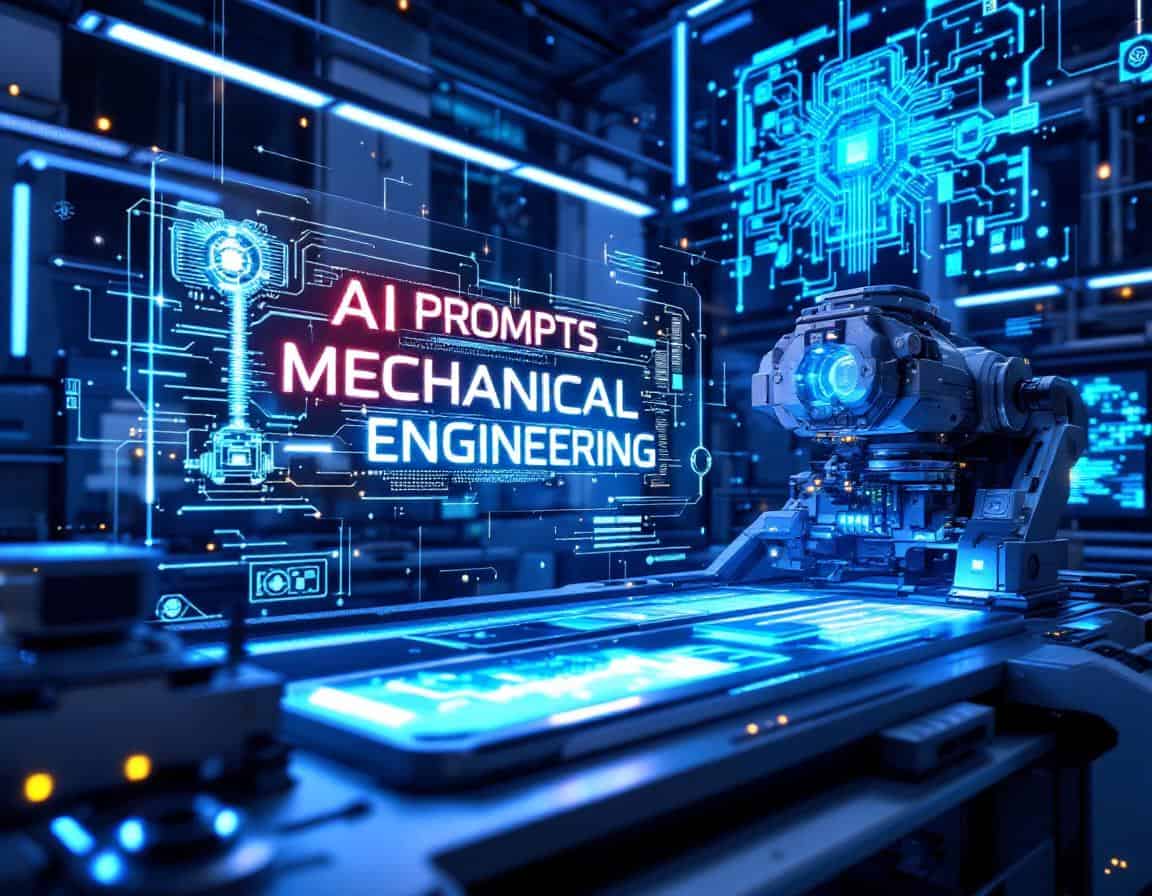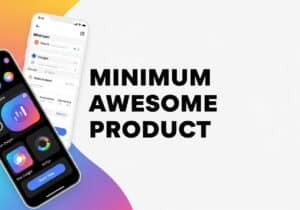
تعمل أدوات الذكاء الاصطناعي عبر الإنترنت على إحداث تحول سريع في الهندسة الميكانيكية من خلال زيادة القدرات البشرية في التصميم والتحليل, التصنيعوالصيانة. يمكن لأنظمة الذكاء الاصطناعي هذه معالجة كميات هائلة من البيانات، وتحديد الأنماط المعقدة، وتوليد حلول جديدة أسرع بكثير من الطرق التقليدية. على سبيل المثال، يمكن أن يساعدك الذكاء الاصطناعي في تحسين التصاميم من حيث الأداء وقابلية التصنيع، وتسريع عمليات المحاكاة المعقدة، والتنبؤ بخصائص المواد، وأتمتة مجموعة واسعة من المهام التحليلية.
The prompts provided below will for example help on generative design, accelerate simulations (FEA/CFD), help on predictive maintenance where AI analyzes sensor data from machinery to forecast potential failures, enabling proactive servicing and minimizing downtime, help on material selection and much more.
- هذه الصفحة خاصة بنطاق واحد. إذا لزم الأمر، يمكنك الحصول على إمكانيات بحث كاملة حسب جميع المجالات وجميع المعايير في > دليل موجهات الذكاء الاصطناعي <، مخصص لـ تصميم المنتج و ابتكار.
- نظرًا لموارد الخادم والوقت، فإن المطالبات نفسها محجوزة للأعضاء المسجلين فقط، ولا تظهر أدناه إذا لم تكن مسجلاً. يمكنك التسجيل، 100% مجاناً:
- تقييم المخاطر وتحليل السلامة
- الهندسة الميكانيكية
موجه الذكاء الاصطناعي إلى Manufacturing Cell Hazard Identification
- التحسين المستمر, بيئة العمل, دراسة المخاطر وقابلية التشغيل (HAZOP), العوامل البشرية, التصنيع اللين, تحسين العمليات, تحليل المخاطر, إدارة المخاطر, أمان
Identifies potential safety hazards in a new or modified manufacturing cell layout based on its description processes and human interaction points. This helps in proactively addressing safety concerns during the design phase. Output is a categorized markdown list.
المخرجات:
- تخفيض السعر
- لا يتطلب إنترنت مباشر
- Fields: {cell_layout_description} {processes_involved_list_csv} {human_interaction_points_text}
- Best for: Proactively identifying and categorizing potential safety hazards in manufacturing cell layouts based on equipment processes and human interaction points.
- تقييم المخاطر وتحليل السلامة
- الهندسة الميكانيكية
موجه الذكاء الاصطناعي إلى Mitigation Strategies for Vibration Failures
- التحسين المستمر, تحليل الفشل, الهندسة الميكانيكية, خوارزميات الصيانة التنبؤية, تحسين العمليات, مراقبة الجودة, إدارة المخاطر, Vibration Analysis
Suggests and elaborates on potential mitigation strategies for vibration-induced failures in specified mechanical equipment given a summary of vibration data and any current attempts. This helps engineers find solutions to improve reliability. Output is a markdown list.
المخرجات:
- تخفيض السعر
- لا يتطلب إنترنت مباشر
- Fields: {equipment_description_text} {vibration_data_summary_text} {current_mitigation_attempts_text}
- Best for: Assisting mechanical engineers in identifying and evaluating various mitigation strategies for vibration-induced failures based on equipment type and vibration characteristics.
- تقييم المخاطر وتحليل السلامة
- الهندسة الميكانيكية
موجه الذكاء الاصطناعي إلى Machine Design Safety Compliance Check
- التصميم من أجل التصنيع (DfM), التصميم من أجل الاستدامة, تقييم الأثر البيئي, بيئة العمل, ضمان الجودة, مراقبة الجودة, إدارة المخاطر, أمان
Evaluates a machine design’s features against user-provided snippets of relevant safety standard clauses to identify potential non-compliance areas. This aids in designing safer machinery from the outset. Output is a markdown checklist.
المخرجات:
- تخفيض السعر
- لا يتطلب إنترنت مباشر
- Fields: {machine_design_features_description_text} {safety_standard_clauses_text} {country_of_operation_for_context}
- Best for: Facilitating early-stage safety compliance reviews by checking described machine features against specific clauses from relevant safety standards provided by the user.
- Ethical Consideration and Impact Analysis
- الهندسة الميكانيكية
موجه الذكاء الاصطناعي إلى Ethical Risk Assessment for Mechanical Projects
- الهندسة البيئية, الأثر البيئي, الهندسة الميكانيكية, إدارة المشاريع, إدارة المخاطر, أمان, ممارسات الاستدامة, التنمية المستدامة
This prompt guides the AI to analyze the ethical risks and societal consequences of a specified mechanical engineering project, considering environmental, safety, and social impact factors. It requires a detailed project description and intended application to provide a structured ethical risk assessment with recommendations for mitigation measures.
المخرجات:
- النص
- لا يتطلب إنترنت مباشر
- Fields: {project_description} {intended_application}
- Best for: Best for evaluating ethical challenges and societal impacts of new mechanical engineering projects
- Ethical Consideration and Impact Analysis
- الهندسة الميكانيكية
موجه الذكاء الاصطناعي إلى Sustainability and Environmental Impact Report Generator
- الهندسة البيئية, الأثر البيئي, تقييم دورة الحياة (LCA), تقييم أثر دورة الحياة (LCIA), مقاييس الاستدامة, التنمية المستدامة, الابتكار المستدام, مواد مستدامة, الممارسات المستدامة
This prompt requests the AI to generate a comprehensive sustainability and environmental impact report for a given mechanical engineering technology or process, considering lifecycle analysis, materials used, and energy consumption. The user inputs the technology name and key parameters.
المخرجات:
- تخفيض السعر
- لا يتطلب إنترنت مباشر
- Fields: {technology_name} {key_parameters}
- Best for: Best for producing structured environmental impact documentation for engineering innovations
- Ethical Consideration and Impact Analysis
- الهندسة الميكانيكية
موجه الذكاء الاصطناعي إلى Policy Implications Analysis for Mechanical Innovations
- الأثر البيئي, التقنيات البيئية, استراتيجية الابتكار, إدارة الجودة, التنظيم, إدارة المخاطر, المعايير, ممارسات الاستدامة, التنمية المستدامة
This prompt instructs the AI to evaluate the policy and regulatory implications of deploying a new mechanical engineering innovation. The user provides the innovation description and the target region or country to tailor the analysis to relevant legislation and standards.
المخرجات:
- النص
- يتطلب إنترنت مباشر
- Fields: {innovation_description} {target_region}
- Best for: Best for understanding and navigating legal and policy frameworks affecting mechanical engineering projects
- Ethical Consideration and Impact Analysis
- الهندسة الميكانيكية
موجه الذكاء الاصطناعي إلى Ethical Dilemma Scenario Generator for Engineers
- التحسين المستمر, التصميم من أجل الاستدامة, Engineering Fundamentals, الأثر البيئي, التصميم المرتكز على الإنسان, ابتكار, الهندسة الميكانيكية, إدارة المخاطر
This prompt asks the AI to create realistic ethical dilemma scenarios specifically tailored to mechanical engineers based on a provided topic or technology. It helps professionals anticipate and discuss challenging situations requiring ethical decision-making.
المخرجات:
- JSON
- لا يتطلب إنترنت مباشر
- Fields: {topic}
- Best for: Best for training and preparing engineers to handle ethical challenges in their work
- الترجمة والتكيف اللغوي
- الهندسة الميكانيكية
موجه الذكاء الاصطناعي إلى Technical Specification Translation
- وثائق التصميم, التصميم من أجل التصنيع (DfM), Engineering Fundamentals, الهندسة الميكانيكية, تحسين العمليات, تطوير المنتجات, ضمان الجودة, إدارة الجودة
Translates a block of technical specifications for a mechanical component or system from a source language to a target language ensuring terminology accuracy. This facilitates international collaboration and product documentation. Output is the translated text.
المخرجات:
- النص
- لا يتطلب إنترنت مباشر
- Fields: {source_language_name_or_code} {target_language_name_or_code} {technical_specifications_text}
- Best for: Accurately translating technical specifications for mechanical components between languages maintaining correct engineering terminology and meaning for international use.
- مقترح المنحة والمساعدة في الكتابة العلمية
- الهندسة الميكانيكية
موجه الذكاء الاصطناعي إلى Grant Proposal Abstract Drafting Assistant
- ابتكار, الهندسة الميكانيكية, إدارة المشاريع, البحث والتطوير
This prompt helps mechanical engineers draft a clear, compelling abstract for a grant proposal. The user provides the research focus, objectives, and expected impact. The AI returns a structured abstract suitable for funding applications.
المخرجات:
- النص
- لا يتطلب إنترنت مباشر
- Fields: {research_focus} {objectives} {expected_impact}
- Best for: Best for generating polished proposal abstracts to improve funding success
- الترجمة والتكيف اللغوي
- الهندسة الميكانيكية
موجه الذكاء الاصطناعي إلى Research Abstract Simplification
- التصنيع المضاف, التصميم من أجل التصنيع الإضافي (DfAM), التفكير التصميمي, الهندسة الميكانيكية, البحث والتطوير, تجربة المستخدم (UX)
Simplifies a complex research paper abstract on a mechanical engineering topic into plain language suitable for a general engineering audience or for communication with non-specialists. It aims to convey the core message and significance without excessive jargon. Output is text.
المخرجات:
- النص
- لا يتطلب إنترنت مباشر
- Fields: {research_paper_abstract_text} {target_audience_description}
- Best for: Making complex mechanical engineering research accessible by simplifying technical abstracts for broader audiences like managers students or non-specialists.



























هل نفترض أن الذكاء الاصطناعي قادر دائمًا على توليد أفضل المطالبات في الهندسة الميكانيكية؟ كيف يتم توليدها بالمناسبة؟
هل سيجعل الذكاء الاصطناعي المهندسين البشريين زائدين عن الحاجة؟
منشورات ذات صلة
أحدث المنشورات وبراءات الاختراع عن البيروفسكايت
أحدث المنشورات وبراءات الاختراع عن الجرافين
أكثر من 45 حيلة علمية للألعاب والتسويق: حيل تعتمد على البيانات والإحصائية
استخدام أو إساءة استخدام 25 تحيزًا إدراكيًا في تصميم المنتجات وتصنيعها
معادلة الرفع المنقحة للمعهد الوطني للسلامة والصحة المهنية في بيئة العمل
الشبكة المظلمة مقابل الشبكة المظلمة مقابل الشبكة العميقة 101 والمزيد